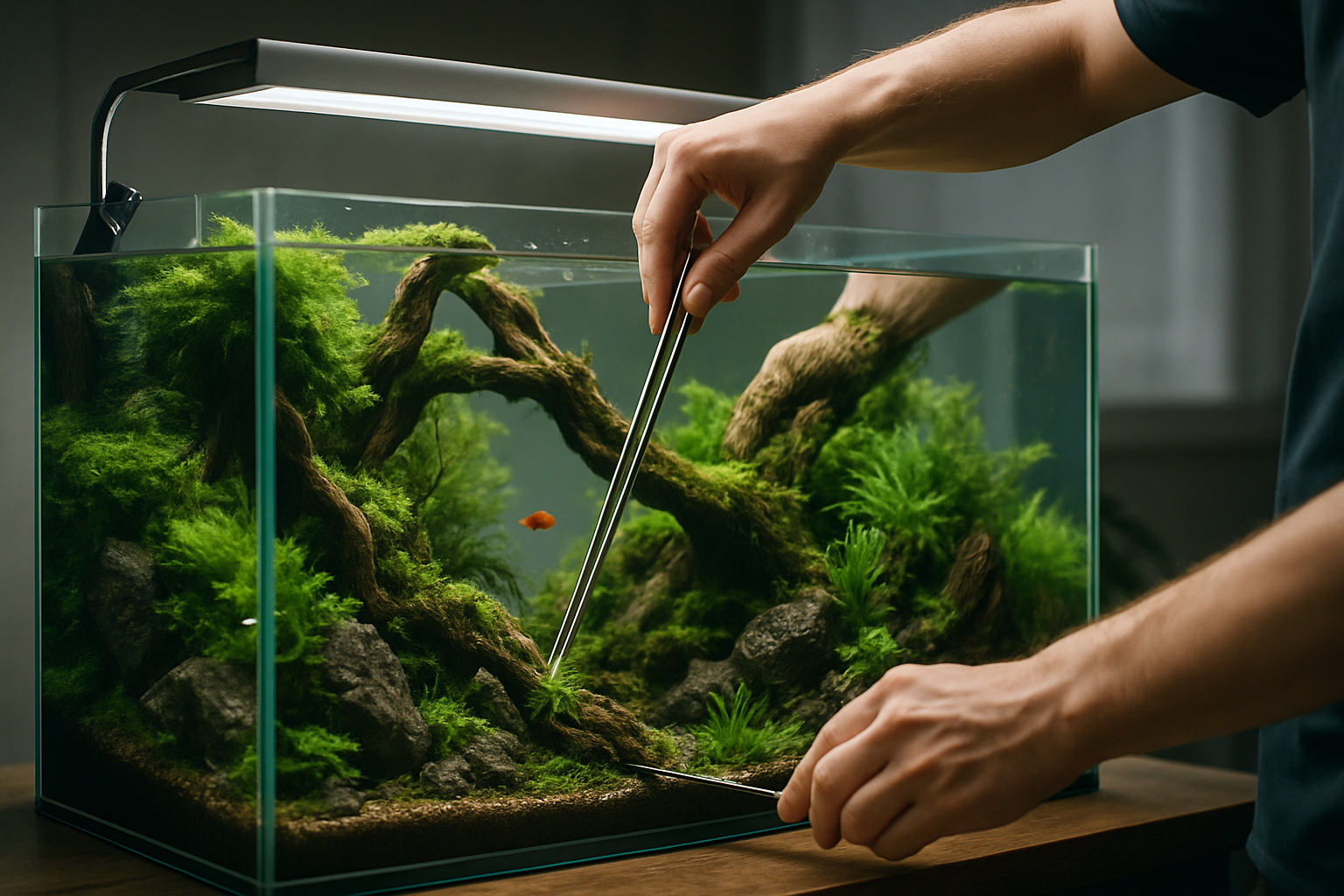Aquascaping: The Art of Underwater Gardening
Dive into the mesmerizing world of aquascaping, where creativity meets aquatic ecosystems. This underwater art form transforms aquariums into living, breathing landscapes that captivate both hobbyists and viewers alike. From lush forests to serene meadows, aquascaping brings nature's beauty into our homes, offering a unique blend of aesthetics and environmental stewardship.

The Science Behind the Beauty
Successful aquascaping requires a deep understanding of aquatic ecosystems. Aquascapers must balance water chemistry, lighting, and nutrient levels to ensure the health of both plants and fish. The nitrogen cycle plays a crucial role, with beneficial bacteria converting fish waste into nutrients for plants. CO2 injection systems are often employed to promote lush plant growth, while careful consideration of substrate composition provides essential minerals. This delicate balance creates a self-sustaining ecosystem that thrives with minimal intervention.
Styles and Techniques in Aquascaping
Aquascaping encompasses various styles, each with its unique characteristics. The Dutch style, originating in the Netherlands, focuses on dense, colorful plant arrangements reminiscent of flower gardens. The Nature Aquarium style, popularized by Takashi Amano, mimics natural landscapes with careful placement of rocks, driftwood, and plants. The Iwagumi style, rooted in Japanese rock gardening, creates minimalist compositions using carefully arranged stones as focal points.
Tools of the Trade
Aquascaping requires a specific set of tools to achieve precision and maintain the delicate underwater environment. Long scissors and tweezers allow for precise trimming and planting in hard-to-reach areas. Substrate spatulas help create contours and slopes in the aquarium bed. CO2 diffusers and drop checkers ensure optimal carbon dioxide levels for plant growth. High-quality LED lighting systems, often with customizable spectrums, provide the necessary illumination for photosynthesis and visual appeal.
The Art of Plant Selection
Choosing the right plants is crucial in aquascaping. Foreground plants like Hemianthus callitrichoides (dwarf baby tears) create lush carpets, while midground plants such as Anubias nana add texture and depth. Background plants like Vallisneria provide height and create a sense of scale. Slow-growing plants like Java fern are ideal for beginners, while fast-growing stem plants like Rotala rotundifolia offer vibrant colors and rapid fill-in. Aquascapers must consider growth rates, light requirements, and compatibility when selecting plants to create a balanced and visually appealing composition.
Aquascaping Competitions and Community
The International Aquatic Plants Layout Contest (IAPLC), held annually in Japan, is the most prestigious event in the aquascaping world. Participants from over 100 countries submit photographs of their aquascapes, which are judged on composition, creativity, and overall impact. These competitions have fostered a global community of aquascapers who share techniques, inspiration, and support through online forums and social media platforms. Local aquascaping clubs and workshops have also emerged, providing hands-on learning experiences for enthusiasts of all levels.
The Therapeutic Benefits of Aquascaping
Beyond its aesthetic appeal, aquascaping offers numerous therapeutic benefits. The process of creating and maintaining an aquascape can be deeply meditative, reducing stress and promoting mindfulness. Observing the gentle movement of plants and fish in a well-designed aquascape has been shown to lower blood pressure and anxiety levels. Many practitioners find that the combination of creative expression and connection with nature provides a sense of accomplishment and tranquility in their daily lives.
Sustainability and Conservation in Aquascaping
As the hobby grows, there’s an increasing focus on sustainability within the aquascaping community. Many enthusiasts are turning to locally sourced materials and cultivated aquatic plants to reduce the environmental impact of wild harvesting. Some aquascapers are experimenting with biotope aquariums, recreating specific natural habitats to raise awareness about endangered ecosystems. These efforts not only contribute to conservation but also deepen the connection between aquascaping and the natural world it seeks to emulate.
The Future of Underwater Landscapes
Aquascaping continues to evolve, with new technologies and techniques expanding the possibilities of underwater design. Advanced LED lighting systems allow for more precise control over plant growth and color rendition. 3D-printed decorations and custom-made aquarium shapes are pushing the boundaries of aquascape layouts. As the hobby gains popularity, it’s likely we’ll see more integration of aquascaping in public spaces, from office lobbies to restaurants, bringing the serenity and beauty of underwater gardens to a wider audience.





